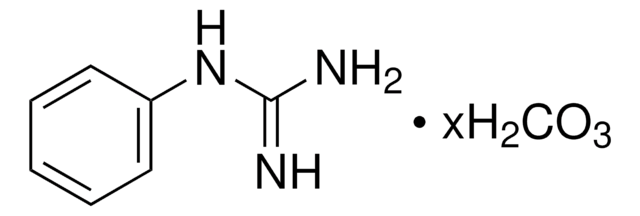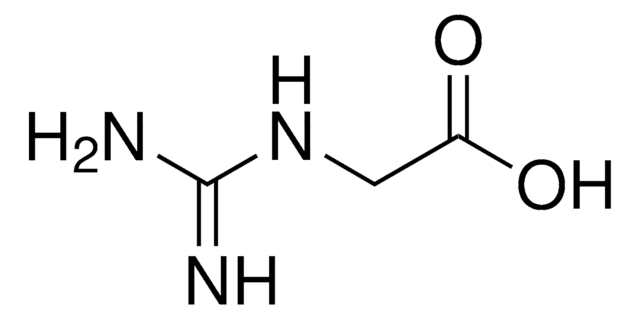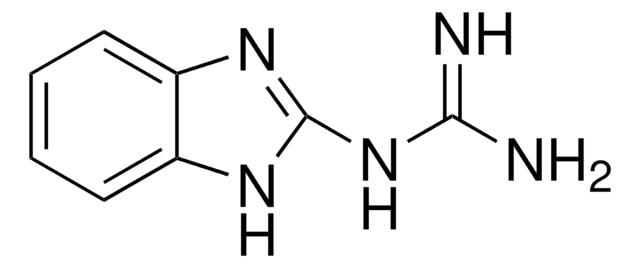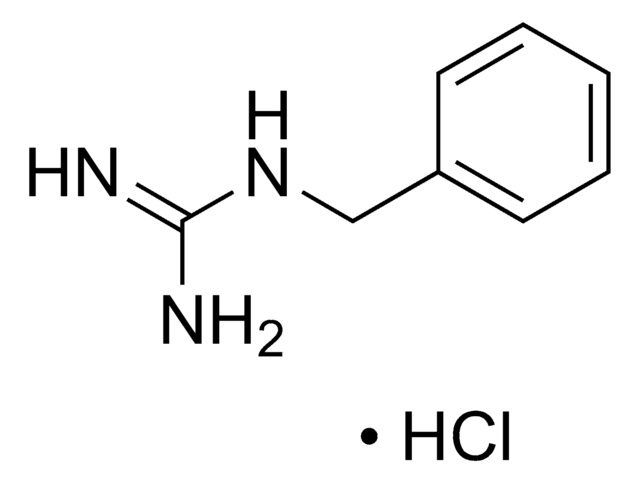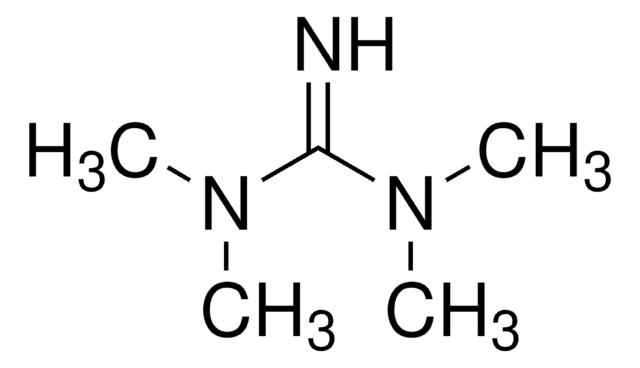All Photos(1)
About This Item
Linear Formula:
CH3NHC(=NH)NH2·HCl
CAS Number:
Molecular Weight:
109.56
MDL number:
UNSPSC Code:
12352100
PubChem Substance ID:
NACRES:
NA.22
Recommended Products
Quality Level
assay
98%
form
solid
solubility
water: soluble 50 mg/mL, clear
functional group
amine
SMILES string
Cl.CNC(N)=N
InChI
1S/C2H7N3.ClH/c1-5-2(3)4;/h1H3,(H4,3,4,5);1H
InChI key
VJQCNCOGZPSOQZ-UHFFFAOYSA-N
Looking for similar products? Visit Product Comparison Guide
Application
Methylguanidine hydrochloride can be used to prepare:
- Biaryl derivatives as BACE1 inhibitors.
- Modified xylose, which is used in the synthesis of biodegradable composite hydrogels.
- Methylguanidinium borohydride ionic liquid, which is applicable as a hydrogen storage material.
signalword
Warning
hcodes
Hazard Classifications
Acute Tox. 4 Oral - Eye Irrit. 2 - Skin Irrit. 2
Storage Class
11 - Combustible Solids
wgk_germany
WGK 3
flash_point_f
Not applicable
flash_point_c
Not applicable
ppe
dust mask type N95 (US), Eyeshields, Gloves
Choose from one of the most recent versions:
Already Own This Product?
Find documentation for the products that you have recently purchased in the Document Library.
Customers Also Viewed
A non-covalent strategy for montmorillonite/xylose self-healing hydrogels
Qi X, et al.
Royal Society of Chemistry Advances, 5(51), 41006-41012 (2015)
Jared N Cumming et al.
Bioorganic & medicinal chemistry letters, 22(7), 2444-2449 (2012-03-07)
From an initial lead 1, a structure-based design approach led to identification of a novel, high-affinity iminohydantoin BACE1 inhibitor that lowers CNS-derived Aβ following oral administration to rats. Herein we report SAR development in the S3 and F' subsites of
Jovana Vušurović et al.
ChemistryOpen, 6(6), 739-750 (2017-12-12)
Interactions of ribonucleic acid (RNA) with guanidine and guanidine derivatives are important features in RNA-protein and RNA-drug binding. Here we have investigated noncovalently bound complexes of an 8-nucleotide RNA and six different ligands, all of which have a guanidinium moiety
S Lotze et al.
The Journal of chemical physics, 142(21), 212436-212436 (2015-06-08)
We study the interaction between the ions methylguanidinium and trifluoroacetate dissolved in D2O and dimethylsulfoxide with linear infrared spectroscopy and femtosecond two-dimensional infrared spectroscopy. These ions constitute model systems for the side chains of arginine and glutamic and aspartic acid
Yang Lu et al.
The Journal of pharmacy and pharmacology, 67(2), 170-177 (2014-12-18)
It has been reported that intestinal urate excretion is increased at chronic kidney disease (CKD) state. In this report, whether uremic toxins are involved in the upregulation of intestinal breast cancer resistance protein (BCRP), an intestinal urate exporter, was examined.
Our team of scientists has experience in all areas of research including Life Science, Material Science, Chemical Synthesis, Chromatography, Analytical and many others.
Contact Technical Service